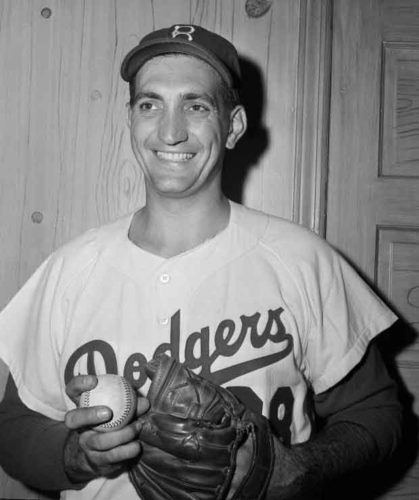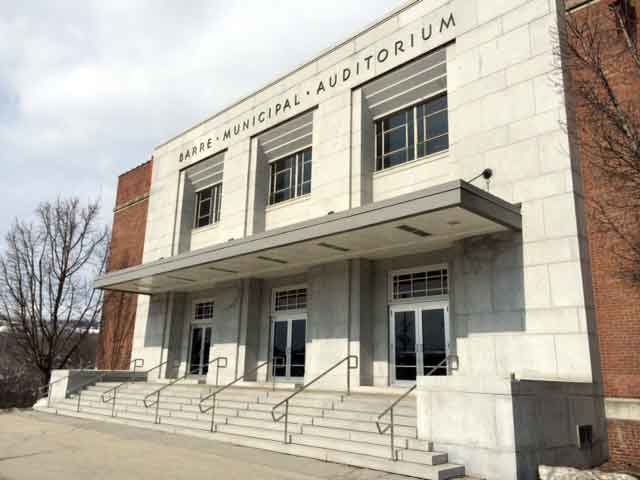





To me, the most interesting story about Barre politics is the story of the Barre Auditorium.
It was completed in 1939, dedicated by Mayor Edwin F. Heininger. The governor may have been there, other dignitaries. It was quite an event. It was the brainchild of a guy by the name of Sergio Pasetto, Italian guy who made it well and somehow or other got an appointment as postmaster during the Roosevelt administration and later was a key figure in the Granite Savings Bank. And Serge had this idea that Barre needed an auditorium to do what auditoriums do.
The City Council was comprised of about . . . I think six people with a mayor. No city manager; it was a mayor-council form of government.
The auditorium had an appeal to people of liberal and not so liberal persuasion because of what it did and would look like and might do in terms of business enterprise, and which later it did. It was a hot issue in the sense that it was federal money. WPA and PWA money went into the construction cost of the auditorium, but it had to be matched, had to have a local match.
It was interesting. I went through the proceedings of, of the City Council discussing the building of this auditorium, and it was interesting how virtually everyone on the City Council found a way to vote on both sides of each–of the issue, depending upon what the amendment was. But, finally, it came down to the fact really that the granite manufacturers saw it as a . . . .The result would be a tax increase of some sort. And the people saw it as a place their kids could go for athletic things and other promising ideas. And so the progressives, who usually don’t have the money, voted to pass the auditorium.
And finally it came to a vote in the city in a curious happening. I can’t tell you how it happened, whether it was legal or not, but they had a vote. I think it was on a Friday. And at the end of the day Friday, the pro-auditorium people were winning by a small number of votes. It was under 200. It might have been under 100. I can’t remember the number. So it was decided that the voting should be extended into the next day. This was in the middle of the voting process. And they thought that that way they’d get enough votes to block the building of this auditorium. But what happened is that simply more people weren’t going to work, so they were able to vote, and it overwhelmingly passed.
One editorial in the Times Argus, or, it was at that time The Barre Daily Times . . . . One editorial said there’s no reason to build that auditorium way up on that hill, practically outside of town. The auditorium, it’s on a small hill, and it certainly is not outside of town. (laughs) And it did pass.
I was there the day they broke the champagne bottle over it. They didn’t break a champagne bottle over it, but they should have. The City Council was all there and everybody. The old notion that success has a million fathers and failure none was certainly true. Everybody was in favor of the auditorium. The mayor, Edward Heininger, took a lot of credit for it. He must have walked both sides of the street in order to get it passed, if he did want it. I never was really clear who wanted it other than Serge Pasetto and a lot of people.
But it came into its being, and when it opened up a job opened up as Director of the Auditorium. The guy wore a necktie and a jacket. And he was a very important person. Then we had recreation directors, and we set up recreation programs in the basement of the auditorium. And during the winter it was used for basketball, all the time for grade school programs, mostly for boys, from 7th grade, 8th grade. And then all high school games were played there as well. And then it would bring in the basketball tournaments in March and April. They’d come in from all over the state, because it was really the best auditorium in the state for a basketball tournament. Maybe still is. I don’t know.
And in those days, you would have a policeman’s ball. That would be a fund raising thing of some sort, a dance with long dresses and a high-powered band. The fireman’s ball. And high school dances were taken place there as well. We had name bands–Tommy Dorsey, Glenn Miller, all those guys. The Globetrotters came up one time, versus a team that Ralph Branca, the old Dodger pitcher, was on the other team.
In addition we had prize fighting. And in addition to prize fighting, we had wrestling. And I can still remember well: I was probably 12 years old, and there was going to be a wrestling match, and it sounded like something that I would be very interested in. I can still remember the name of one of the fighters. His name was Harry Smokler Finkelstein. They would put two guys in a ring. It was the same show they do on TV today, you know. And somebody would pull some soap from out of their bag, and they’d rub soap in the other guy’s eyes. And you had the time of your life. I can’t believe to this day my mother would let me go to that. If she knew what went on at that thing, she’d have a bird. But anyway. That was another kind of entertainment you had there.
And I remember the two janitors, Shorty and Bill. Bill was a great big, husky guy, and Shorty was short. And they’d tell stories of all kinds to the kids who came in. And then when we played baseball up there or other sports, the locker rooms were downstairs, so we’d get acquainted with Bill and Shorty and learn the stories and how the world works. And that was part of it.
And it was a magnet. Immediately, it was drawing people from–certainly from all over the county and even beyond to what they would call a farm show. And they’d have all this farm equipment. And a home show. And then they’d have all these refrigerators and stoves and everything you have at a home show. And it, it really worked because there was no TV to compete with. There was no, no nearby big box store where you could see anything like what you could see by the home show.
